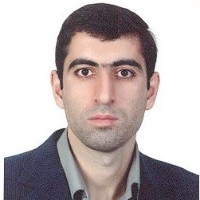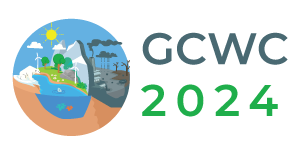
University of Hormozgan, Iran
Abstract:
Different parts of the climate system as well as precipitation are subject to the global warming and climate change. The aim of present study is monitoring different aspects of changes and trends in precipitation over Iran, using MERRA2 reanalysis data from 2019 to 2020 based on 7 indices including Maximum 1-day precipitation (Rx1day), Simple precipitation intensity index (SDII), Maximum length of dry spell (CDD), Maximum length of wet spell (CwD), Annual count of days when PRCP ≥ 10mm (Rx10mm), Annual count of days when PRCP ≥ 1 mm (Rx1mm), and Annual total precipitation on wet days (PRCPTOT). MERRA2 is the second generation of Modern-Era Retrospective Analysis for Research and Applications (MERRA) by NASA’s GMAO (National Aeronautics and Space Administration, Global Modeling and Assimilation Office), with spatial resolution of 0.5o (approximately 50 kilometers) and temporal resolution up to hourly data. Correlation analysis between MERRA2 and observation data of 48 weather stations indicates acceptable results all over the country especially for the North, the North West and the Western parts. The highest values of R2 was 0.94 calculated for the wet regions of the North and Northwest, the least values were 0.63 for the arid regions of the South and the Central parts of Iran. Mann-Kendall non-parametric test was used for trend analysis and detection. Mann-Kendall test uses time series data for consistently increasing or decreasing trends in a variable and can works with all statistical distributions. The results show a decreasing trend on 0.95 significance level in 4 indices including PRCPTOT, Rx1day, Rx10mm, CDD in the West and Northwest of Iran. Previous researches confirmed and reported the same results. In the North East part of the country (parts of the Khorasan-e-Razavi, Semnan and Golestan provinces) positive increasing trends was detected. Considering this distinct regional discrepancy in calculated trends (trends in indices), it is necessary to focus on the effects of possible changes in pressure and synoptic systems on the precipitation changes over Iran. For RX10mm increasing trends was detected for the South and South East of the country. Due to the high absolute humidity in these regions, if condition is suitable for convection and air ascending, Sudan low pressure and Indian monsoon make possible high amount of intense convective rainfall origin from Indian ocean. Overall, MERRA2 shows an underestimate for the region of highest rainfall (North of the country) and an overestimate for arid regions. As a conclusion, based on the results of this study it is necessary to have a distinct precis plane not only for managing the decreasing trends in precipitation and water deficits, but also for mitigating impacts of intense rainfall and flash floods. Further studies needed to determine simultaneous (combined) effects of precipitation and temperature changes in other to managing water resources.
Biography:
Biography:
Asadollah Khoorani is currently an
associate professor at Geography Sciences Department, University of Hormozgan,
Bandarabbas, Iran (since 2010). He received his master's and PhD degree from
Tarbiat Modares University, Tehran, Iran, in Climatology. His research
interests include Climate Change projections and impacts. His published
research has appeared in refereed national and international academic journals
such as International Journal of Biometeorology, Theoretical and Applied
Climatology, Air, Soil and Water Research and others.
